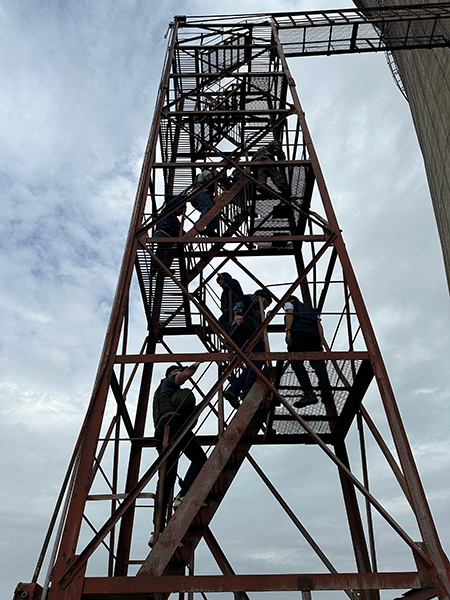IAEA Chief Visits Zaporizhzhia Power Plant
October 2024
By Doniyor Mutalov
The situation at Ukraine’s Zaporizhzhia Nuclear Power Plant “remains precarious” due to “regular explosions, drone attacks, and repeated interruptions of power supply” that heighten the risk of a nuclear accident, according to the head of the International Atomic Energy Agency (IAEA).

IAEA Director-General Rafael Mariano Grossi shared his continuing concerns in a statement Sept. 16 following a recent visit to the power plant, which has been occupied by Russian military forces since shortly after Russia’s full-scale invasion of Ukraine in February 2022.
“Preventing a nuclear accident during this terrible war is vital, and attacking a nuclear power plant is unacceptable, regardless of where it is located,” he said.
In comments to the IAEA Board of Governors on Sept. 9, Grossi disclosed that, “in line with the agency’s advice, it is understood that no reactor will be restarted as long as the conflict continues to jeopardize the nuclear safety and security of the plant.” The Wall Street Journal reported in April that Russia wanted to restart at least one reactor at the power plant.
During his latest visit to the Zaporizhzhia facility, on Sept. 4, Grossi inspected the remains of a fire that ignited on Aug. 11 inside one of the plant’s cooling towers. The IAEA, in an Aug. 13 statement, rejected claims that a drone struck the towers and determined that no “foreign objects or materials were visible.” Because the facility is no longer operational, the cooling towers are not needed to cool the plant’s six reactors, and the fire did not pose any immediate threat to nuclear safety, the agency said. The fire-damaged cooling tower may have to be demolished, it said.
In a statement Sept. 5, the IAEA also highlighted Grossi’s visit to the water-pumping stations at the Zaporizhzhia plant and the availability of cooling water in the facility’s cooling pond, which has dropped by two meters since the destruction of the nearby Kakhovka dam in June 2023. The Kakhovka reservoir previously was a source of cooling water for the reactors, but since 2023, newly dug groundwater wells have been used to provide cooling water.
The plant temporarily lost connection on Aug. 23 to its only backup power line, the 330-kilovolt Ferosplavna line, leaving the facility “precariously reliant on a single power source,” the IAEA said.
Before the conflict erupted, the Zaporizhzhia plant had four 750-kilovolt and six 330-kilovolt powerlines. Currently, only the 750-kilovolt Dniprovska and 330-kilovolt Ferosplavna power lines are still connected to the plant.
On Aug. 8, Grossi stressed that “[t]he off-site power supply to the [plant] remains vulnerable, and any threat to the operability of the last two power lines is extremely concerning.”
